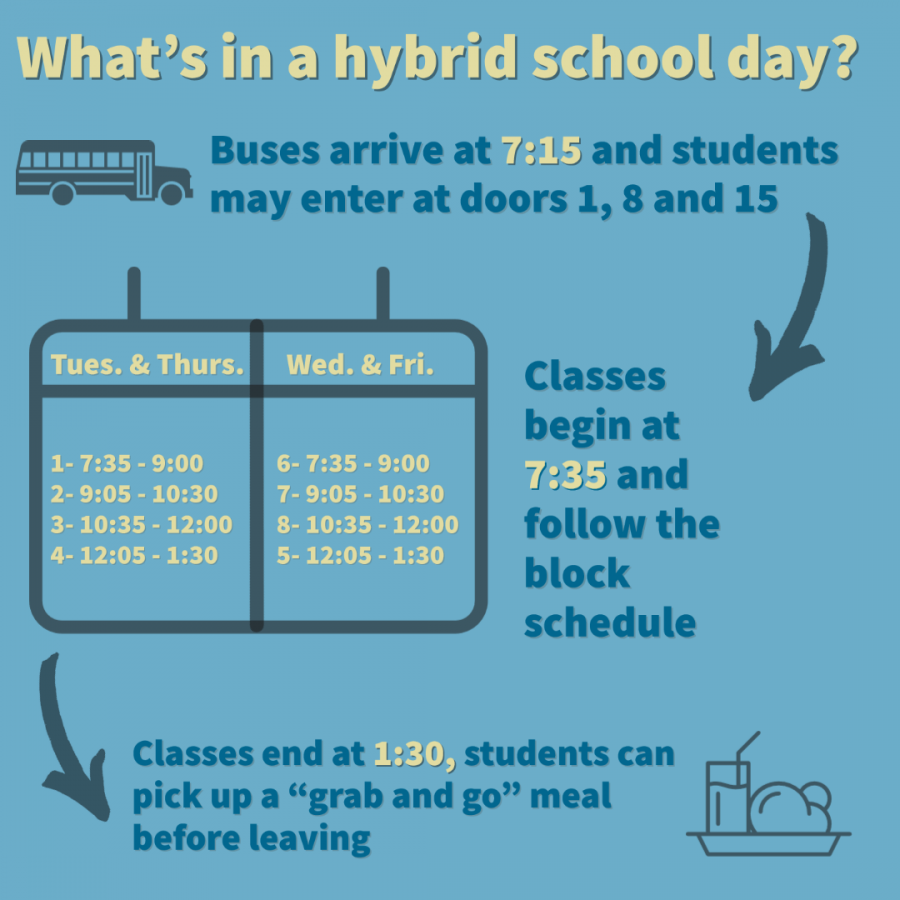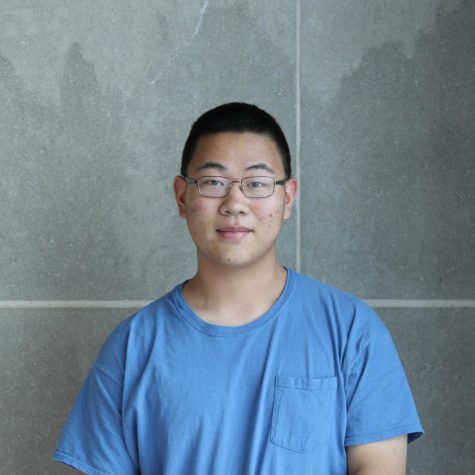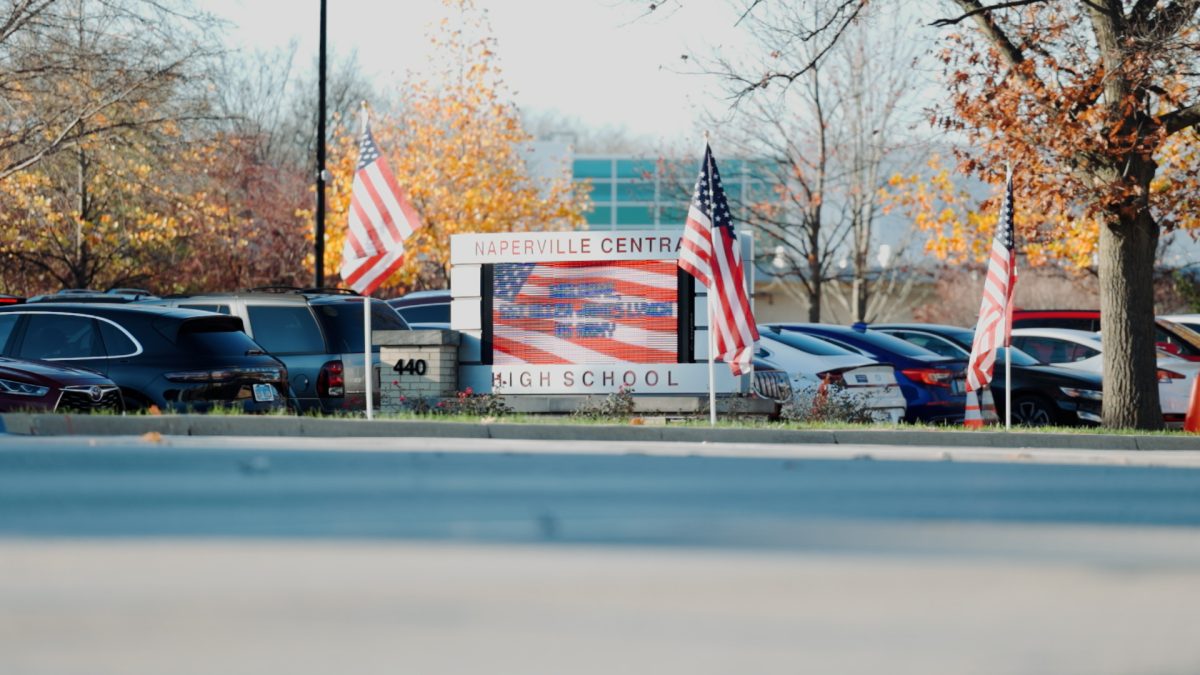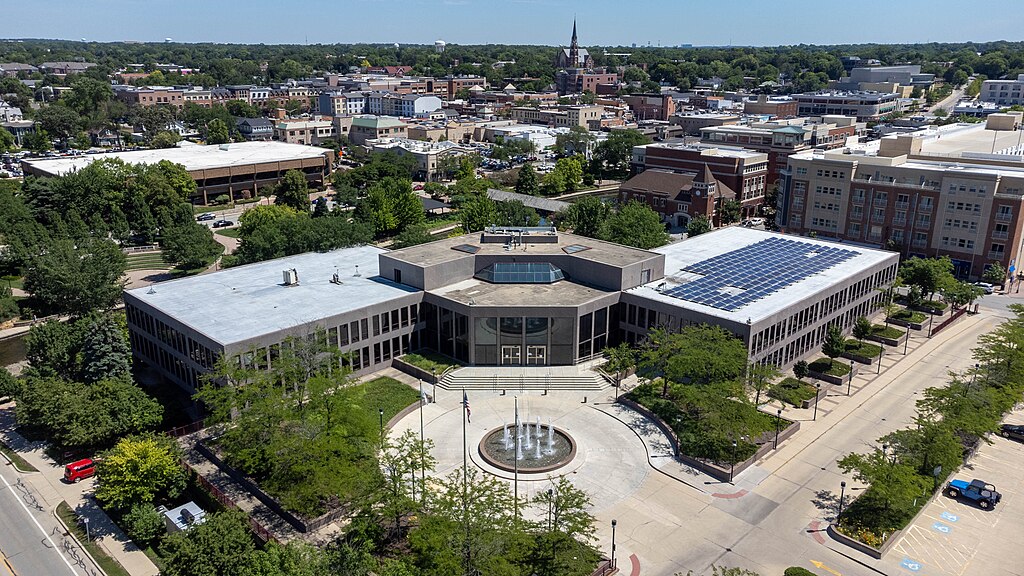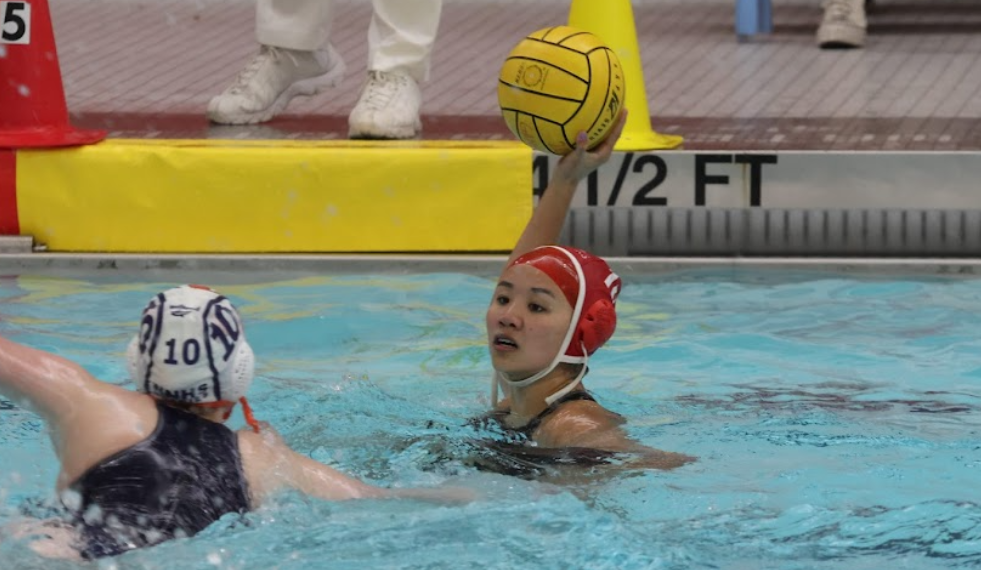Redhawks gear up for first days back since mid-March
January 25, 2021
After a semester of mostly online learning, students will return to Naperville Central High School for hybrid classes today as part of stage 3 of Naperville District 203’s Return to Learn plan. To accommodate for mitigations necessitated by the COVID-19 pandemic, in-person learning will be extremely different from before.
According to Assistant Principal of Operations Carrie McFadden, about 75% of Central’s 2,598 students will attend hybrid instruction, down slightly from the 77.3% who registered four weeks earlier.
Coming to school
Regardless of whether students take the bus or find their own transportation, they cannot enter the building as early as before the pandemic.
“The drop off time is supposed to be 7:15 [a.m.],” Principal Bill Wiesbrook said. “That window of walking off the bus to class starting is significantly smaller than in previous years.”
Students can only enter the school through the main entrance (Door 1), the bus circle entrance (Door 8), or the entrance between the field house and flat wing (Door 15). At all entrances, students must either present a signed self-certification form, effective for the entire semester, stating they will not go into the building if they show symptoms of COVID-19, or, if they have already turned in said form, show a green dot on their ID card. All students also need to scan their ID cards at school entrances so administrators can monitor exactly who is in the building.
Before the pandemic, students could attend club meetings or socialize with their peers in the waiting period before the first class. Now, they should go directly to their first period classroom, which should already be open and have adult supervision.
The hybrid school day
The same block schedule introduced in October will remain in effect for second semester. Every day, classes start at 7:35 a.m., each period lasting 85 minutes. In between classes, students have a five-minute passing period. When traveling to their next classroom, students should keep in mind that staircases are unidirectional, and hallways are separated or one way to maximize social distancing.
“Students will notice most of our teachers with more flexibility about being tardy,” Wiesbrook said. “We have great teachers with great judgement. I don’t think it will be a problem.”
In case students get hungry or thirsty throughout the day, it is up to their teachers whether they are allowed to quickly unmask to eat or drink in the classroom. Otherwise, students can step into the hallway.
School administrators aim to minimize the amount of non-curricular time students spend on campus. Students have open campus lunch and study hall periods, and, unlike in past years, no parental permission form is required to leave early or arrive late in non-class periods.
At the same time, some clubs and sports will still run in person.
“Because [DuPage County] is in [Restore Illinois Tier 2] the low risk sports are able to take place,” McFadden said. “We have had some clubs meeting already, and we will continue to, and that will all happen after the official school day.”
Mitigating the spread
The entire purpose of this hybrid learning model, which alternates students between in-person and remote instruction, is to provide in-person interaction to students while minimizing the potential for transmission of COVID-19.
“We’re not having all 1950 [students who signed up for hybrid] in the building on the same day, that number will be divided by two,” Wiesbrook said.
Students expressing symptoms should immediately go to the temporary COVID health office, which is across the hall from the regular one.
“Once they get down here, we will have someone check on their symptoms,” nurse Erica Kelly said. “We will send that student home after we call their parents, and we will also walk parents through the guidelines for coming back to school.”
As with Stage 2 targeted instruction during first semester, students who test positive for COVID-19 or show symptoms, which largely mimic the flu, will be required to quarantine for at least 10 days after the onset of symptoms. They cannot return unless they are symptom free and have documentation from a physician.
“We don’t require testing,” nurse Erica Kelly said. “It’s what we recommend. If a student gets a COVID test, it comes back negative in two days and they’re feeling better, then that student would be able to come back to school.”
At this time, the school will only accept Reverse-Transcriptase Polymerase Chain Reaction (RT-PCR) COVID tests to prove a student can safely return, due to the low accuracy of antibody and rapid antigen tests. New surveillance testing, while helpful as an added mitigation strategy, cannot exempt a student from their quarantine either.
After a student shows symptoms or tests positive for the virus, staff will notify close contacts, defined by the Centers for Disease Control (CDC) as individuals within six feet of a COVID positive individual for 15 cumulative minutes in a 24 hour period, and limited contacts, generally the students or staff who were in the same space as the positive individual.
“We are going to do our best to call [close contacts the] same day [we’re notified of a positive case],” Kelly said. “We hope to have limited contact [notices] out within 48 hours.”
Because siblings and close contacts may be asymptomatic, they must quarantine for 14 days, and can return to in person learning if they show no symptoms. Limited contacts are not required to quarantine, but may choose to quarantine as well.
The school will provide PPE and sanitation materials to students, including masks, gloves, face shields, hand sanitizer and disinfectant to wipe down seating areas after class.
Into the unknown
With all the planning that has gone into hybrid learning, many are still apprehensive about in person instruction.
“I have made 136 changes [as of Jan. 19],” McFadden said. “A majority of those are going online.”
Indeed, as the COVID death toll has risen above 400,000, people are still very concerned with not spreading the disease.
“I just don’t want to spread the virus anymore, just because numbers are so far up,” said senior Stelios Gerousis, who is choosing to continue remote learning. “I want to try and help slow the spread.”
Other students think the benefits outweigh the costs.
“We’re at a point where online learning has been a struggle for lots of people,” said junior Nickolas Santiago, who is choosing to learn in-person. “I feel like I’ll be more motivated, and I’ll have more focus in person.”
It is likely that in-person learning won’t offer the normalcy students are desperate to return to, however.
“We’re excited to have kids coming back into the building,” McFadden said. “But things aren’t going to be perfect.”



